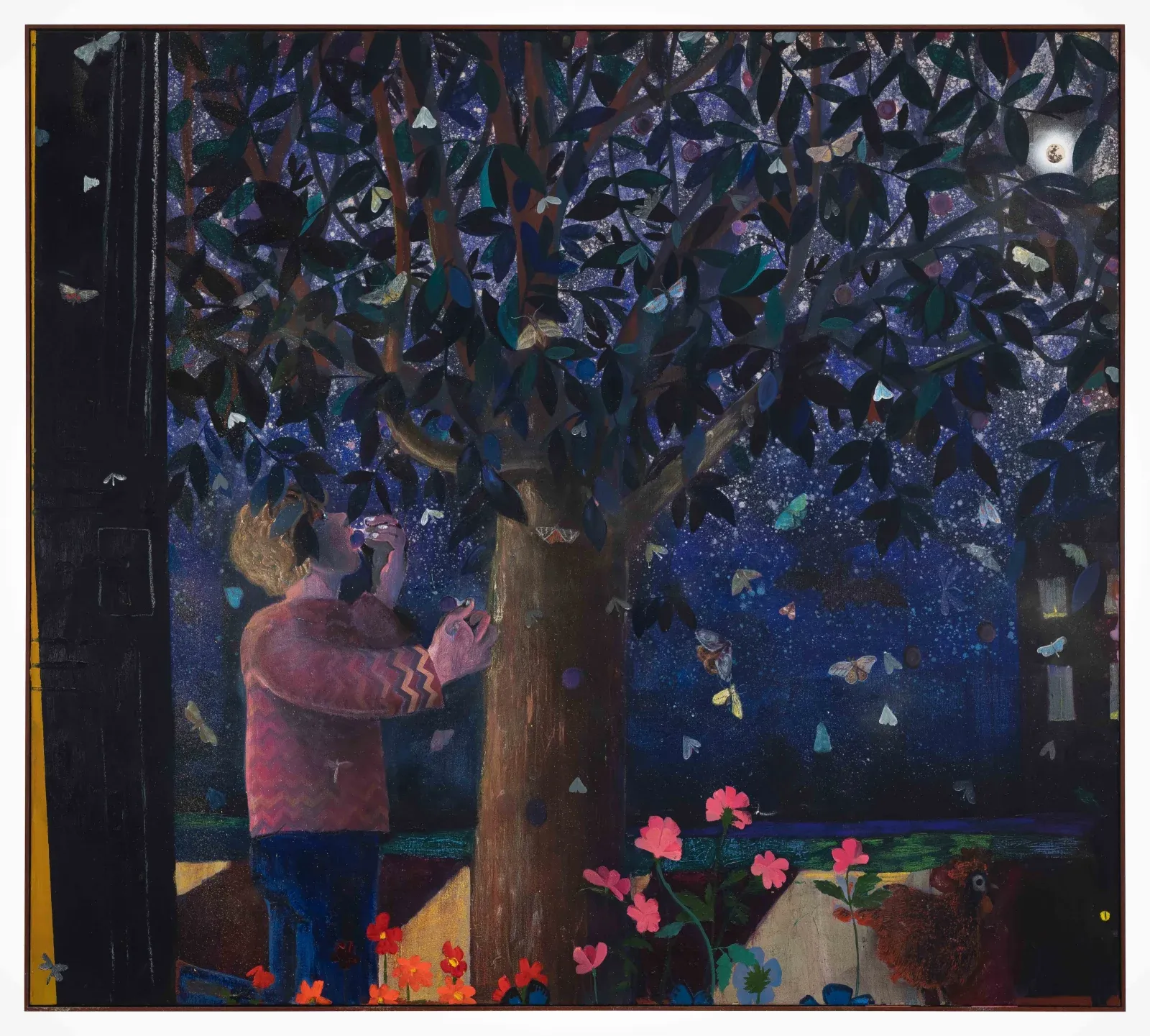 Pieter Jennes, I had to see you tonight, 2025
Pieter Jennes, I had to see you tonight, 2025 Children's fairytales, in their original and not 'Disneyfied' versions, are often filled with grim and horrifying moments. The Little Mermaid bleeds from her newly gained feet with every step until she disappears completely, dissolved into sea foam, while Hansel and Gretel burn the witch in the oven.
Princes and princesses do not always reach a happy ending, and many unsettling moments continue to linger across the narrative span. Even later, when they become distant fragments of childhood, these fairytales leave a sliver of fear and uneasiness trailing in memory. The solo exhibition Huisje, tuintje,… of Belgian artist Pieter Jennes at Gallery Sofie Van de Velde in Antwerp stirs precisely these unsettling memories.
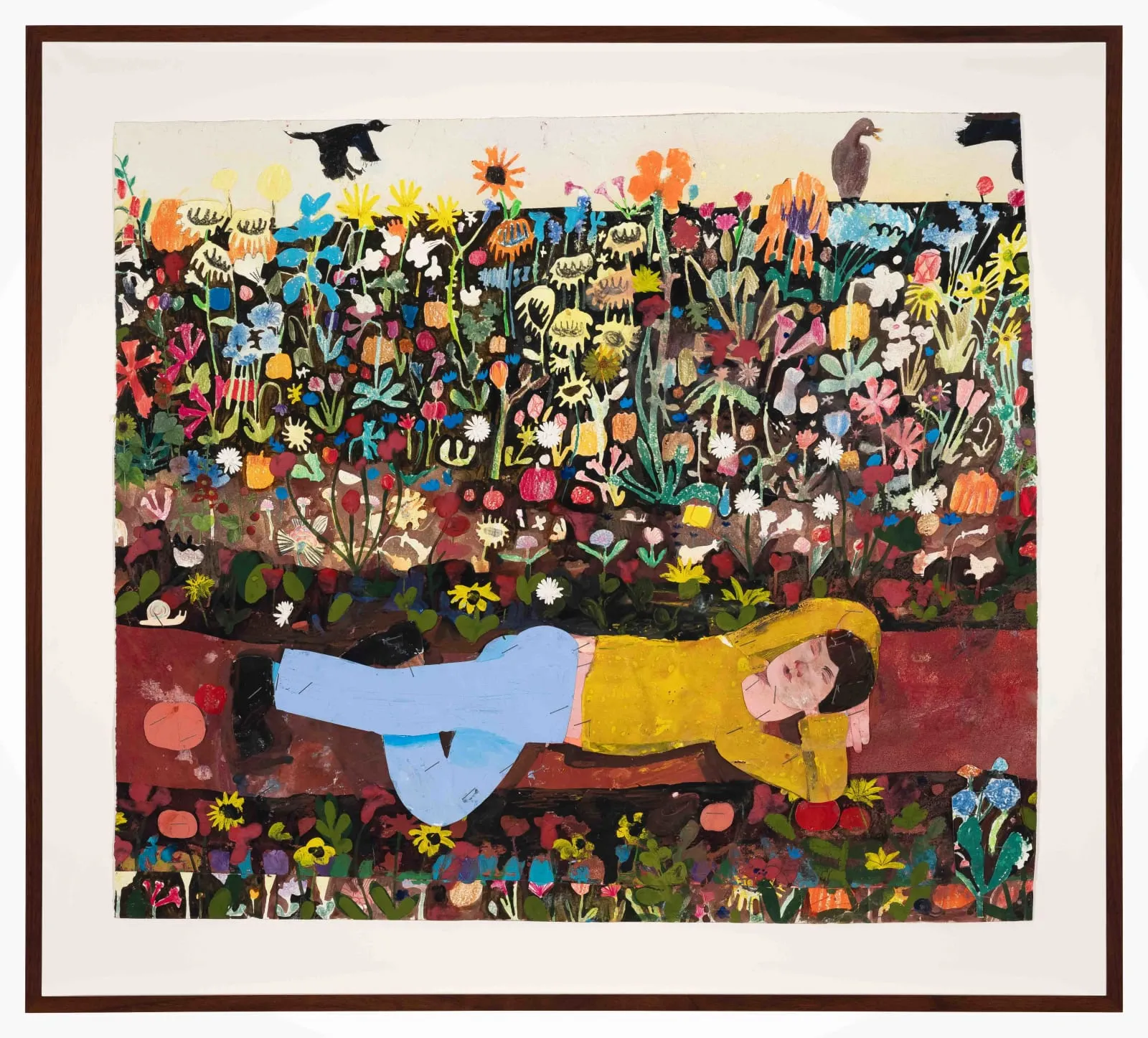
From the outset, a series of small graphics unfolds some of the dominant motifs that are elaborated in large oils in the other parts of the gallery. They are rich in detail, filled with peculiar characters, and, in contrast to the canvases, include textual elements as well. One of them features a boy climbing a tree while a rabid dog barks and rears on its hind legs in an attempt to bite him. Or perhaps it is the boy's dog, jumping towards its owner in fear of being left behind.
Such ambivalences abound in Jennes's work. Tree bark, foliage, and the animal world are some of the motifs that evoke both the Garden of Eden and more sinister spaces shaped by dark urges and intentions. Snow White was left in a dark forest by a hunter who refused to kill her, hoping the wild animals would do the job; yet she ultimately finds her salvation in the same woods. Jennes's depiction of nature holds a similar duality: it is hopeful while forlorn, isolating yet filled with encounters.
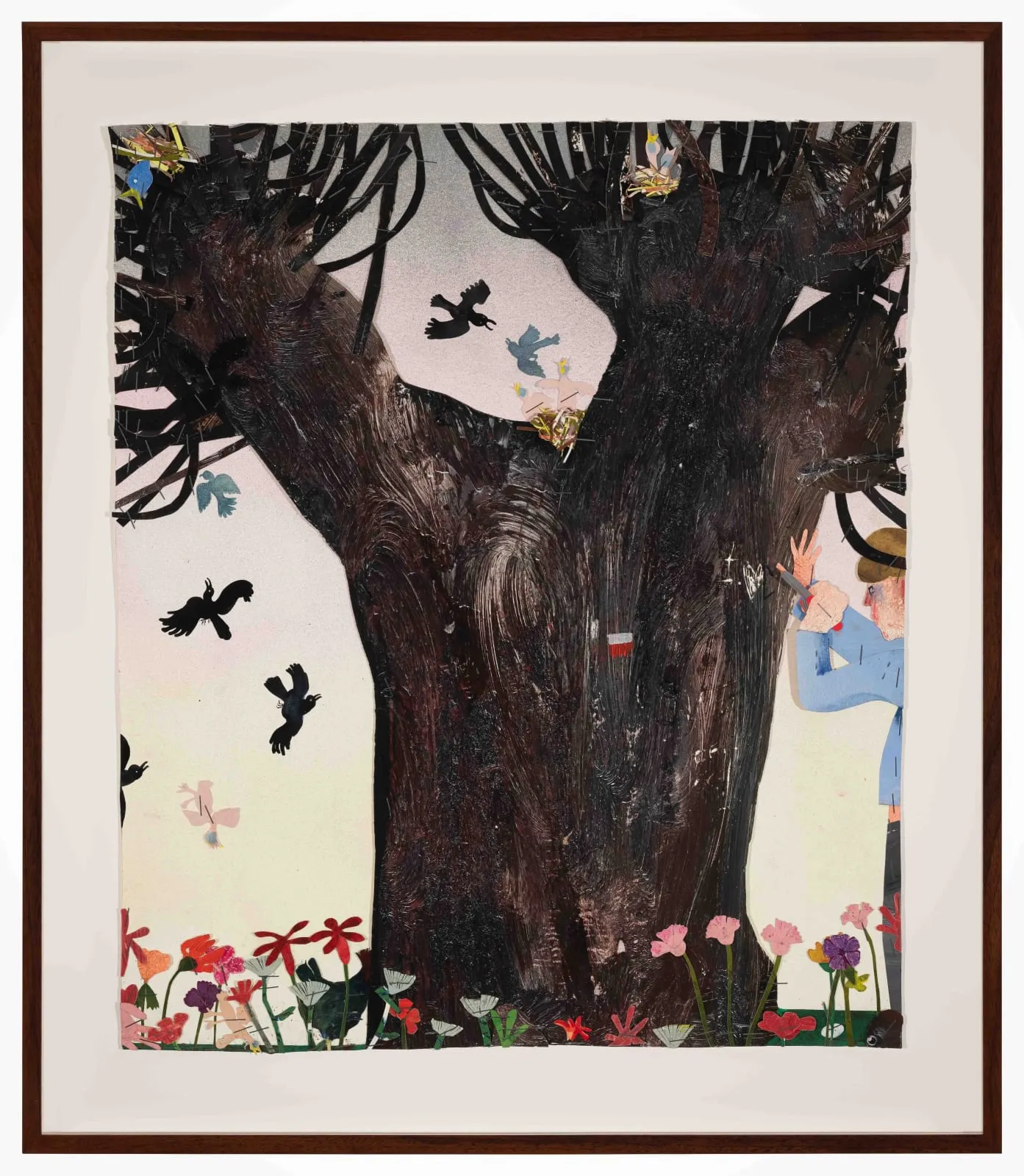

A Better Future again foregrounds a tree, with rich details and a muted palette reminiscent of autumn. Jennes uses a specific procedure in depicting the leaves — a combination of his imagination and the direct use of paint-covered leaves pressed onto the canvas, leaving delicate traces of their textures.
Among the richness of material applications and details, one motif particularly attracts attention: a heron with its beak open towards the sky, just about to swallow a frog. Among the foliage, a few birds, rendered in bright colours, seem oblivious to the drama unfolding below.
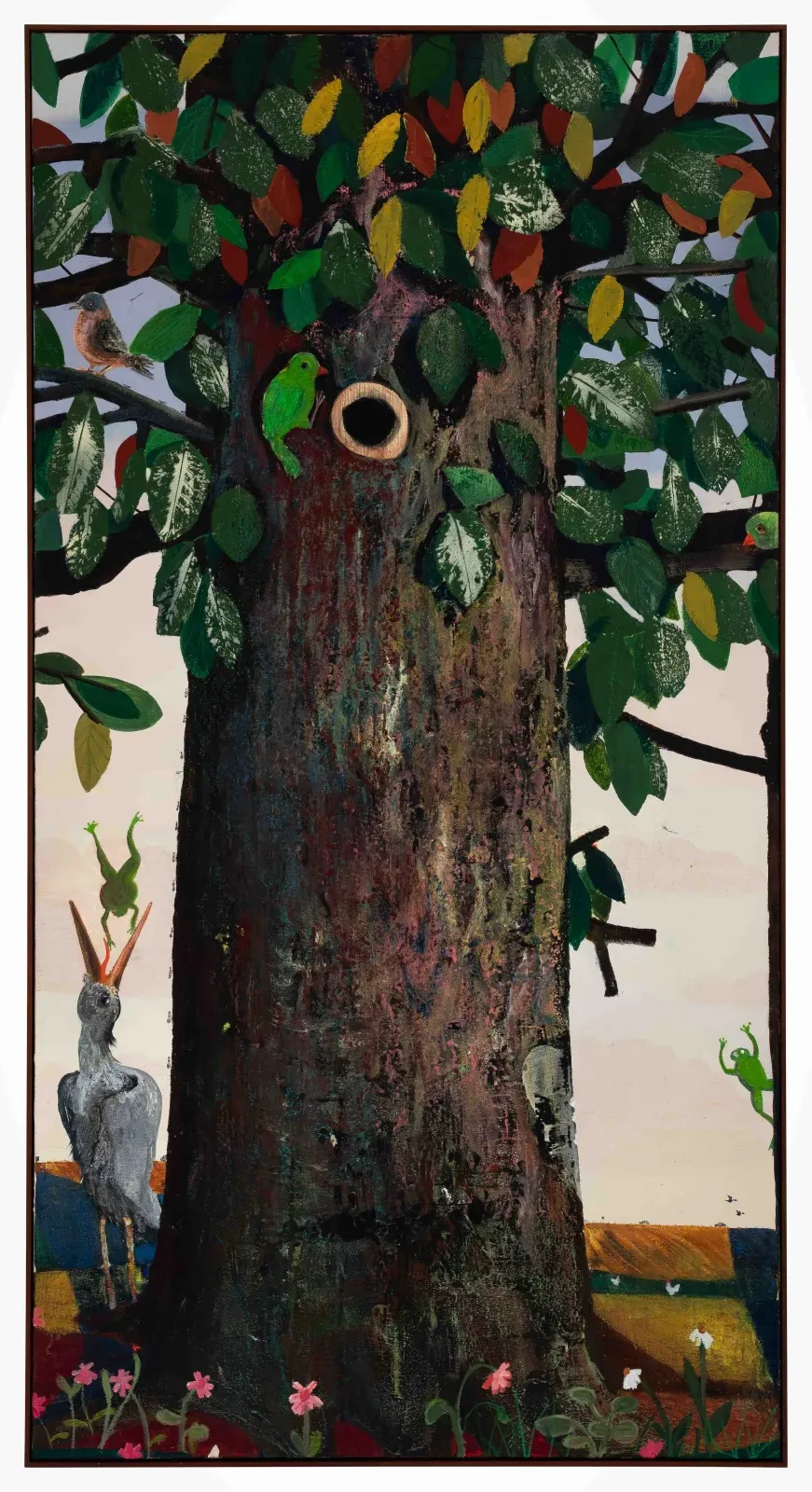
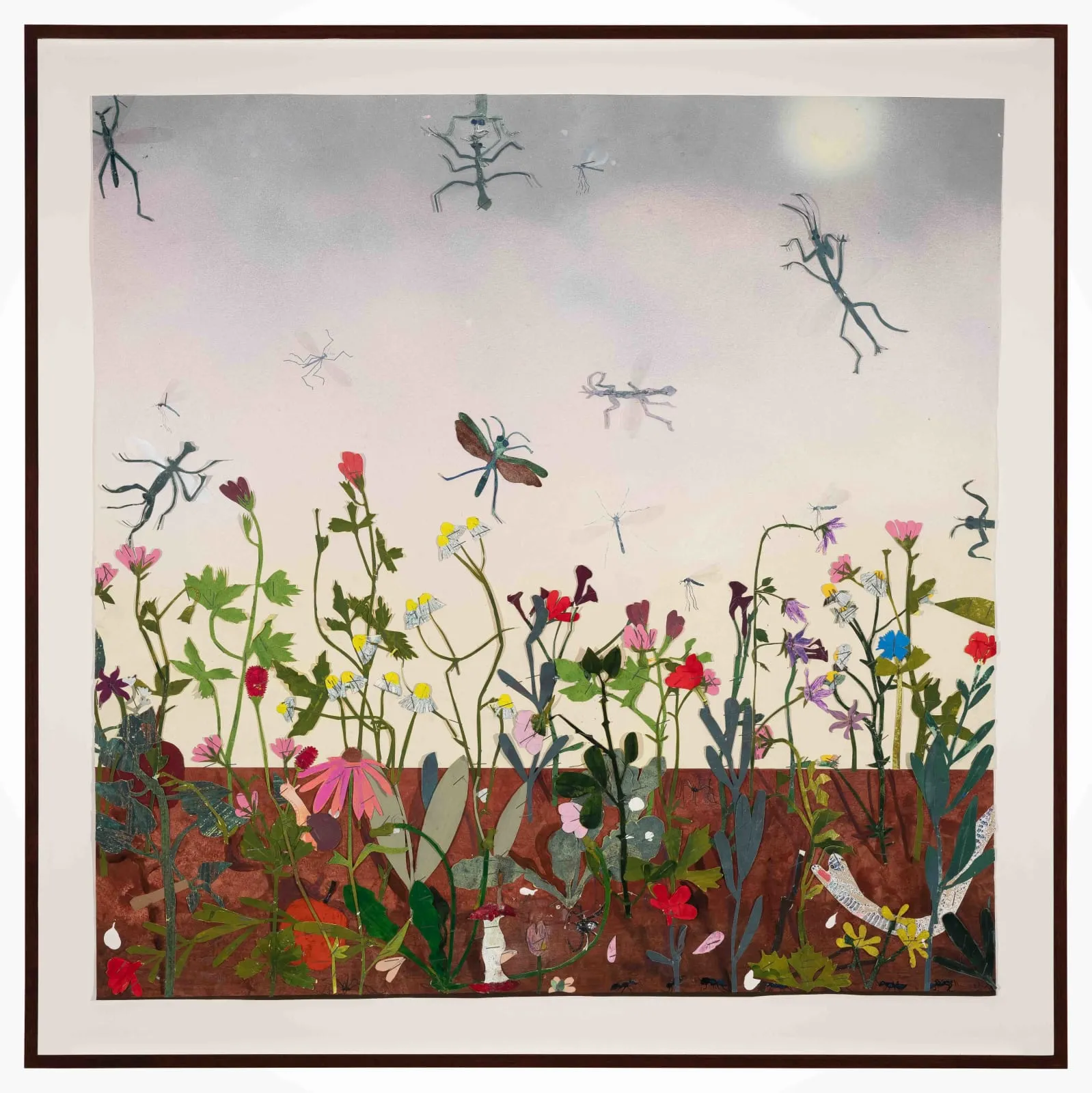
This struggle and fight for survival among species rings prominently in the featured works, although it is not always done in such explicit terms. Human figures linger on the edges, stealing eggs, basking in flower- and bug-rich fields, and carving their love notes on tree bark, showing their presence to be the main disruption of the fairytale-like settings.
Two paintings, I had to see you tonight and All the young... are among such examples. The latter is particularly enticing: the figure lying on the ground in an alley in the field is surrounded by snails, mice, and bugs, and even a bat appears in the upper register of the canvas. Although included, the figure is also separated from the lush botanical world above by a strict division of painterly registers—the brown alley against the colorful nature.

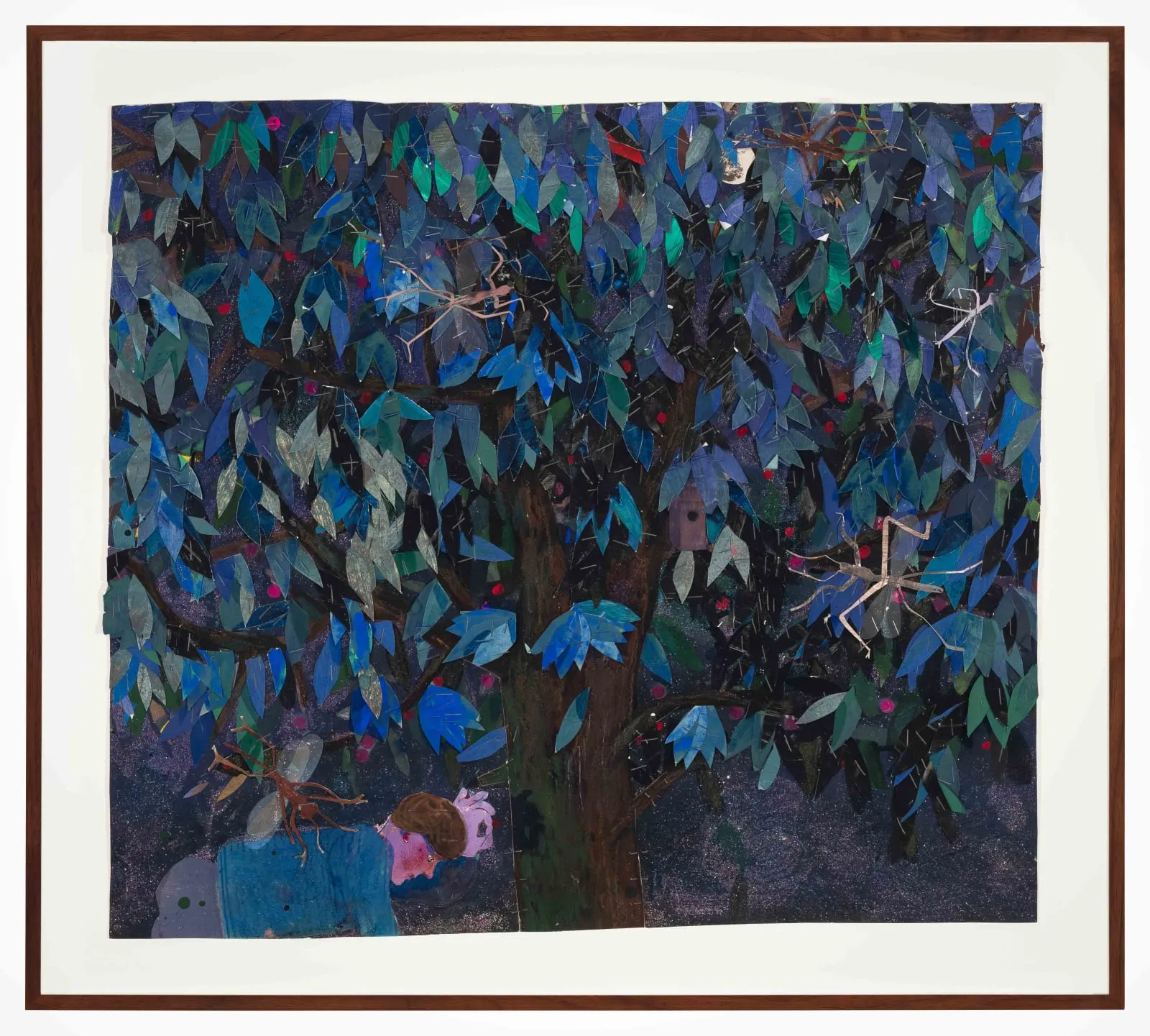
It is precisely this and other similar divisions that bring a sense of uneasiness to Jennes’s painterly world. In addition, many of the motifs are cut off by the canvases’ edges, leaving a feeling of an unfinished story, of an event cut short from full view. The hindrance of narrative that this approach brings complicates the artist's imaginary world, preparing the viewer for a not-so-rosy reality of human-nature relations.
Jennes creates a visual exposition of the moment between childhood and adulthood when everything seems full of possibilities and yet full of constraints as well, between imagination and a more rigid and ordered world of grown-ups. It is a peculiar state, hinted at in the severity, uneasiness, and menace of some of the motifs.
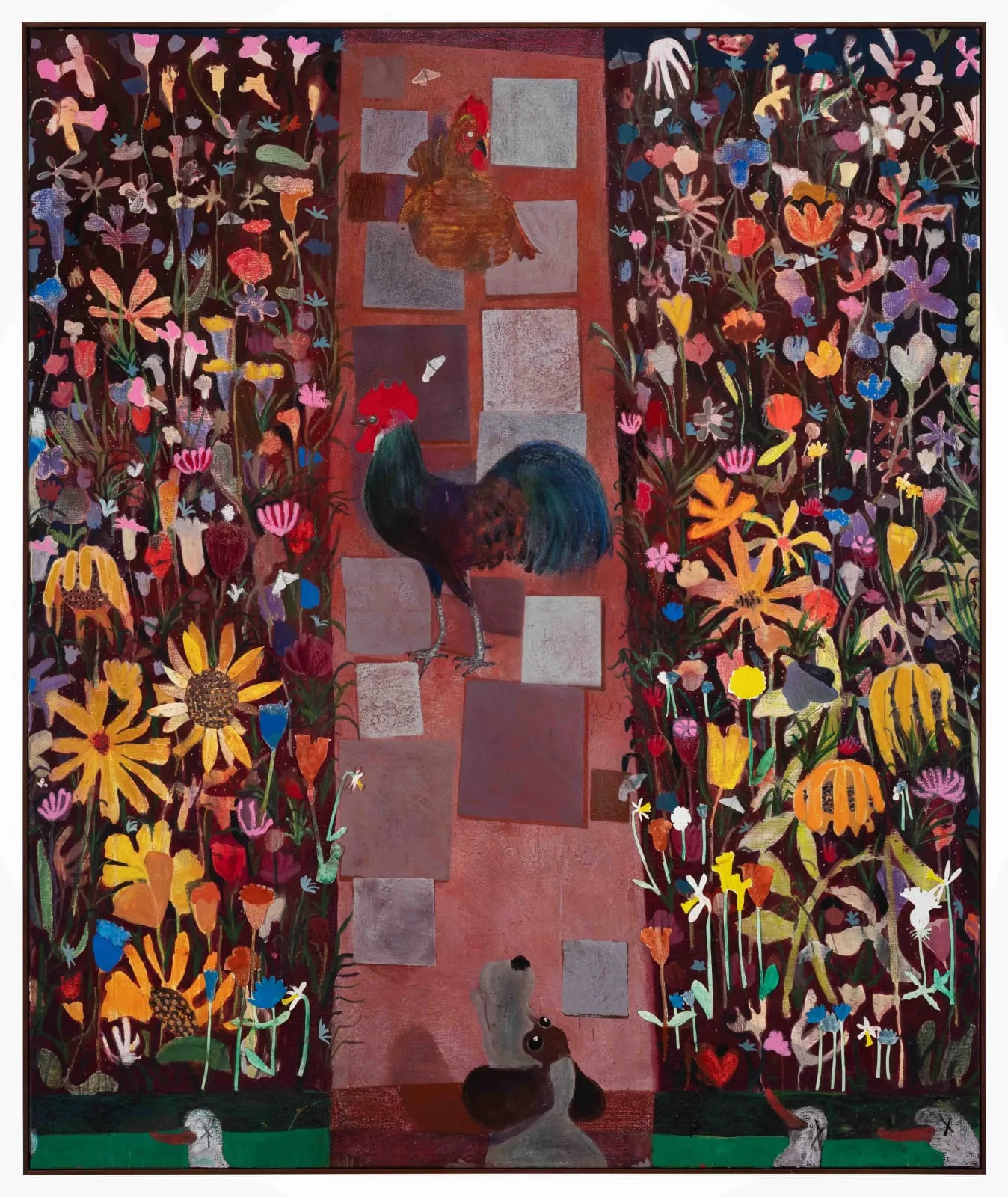
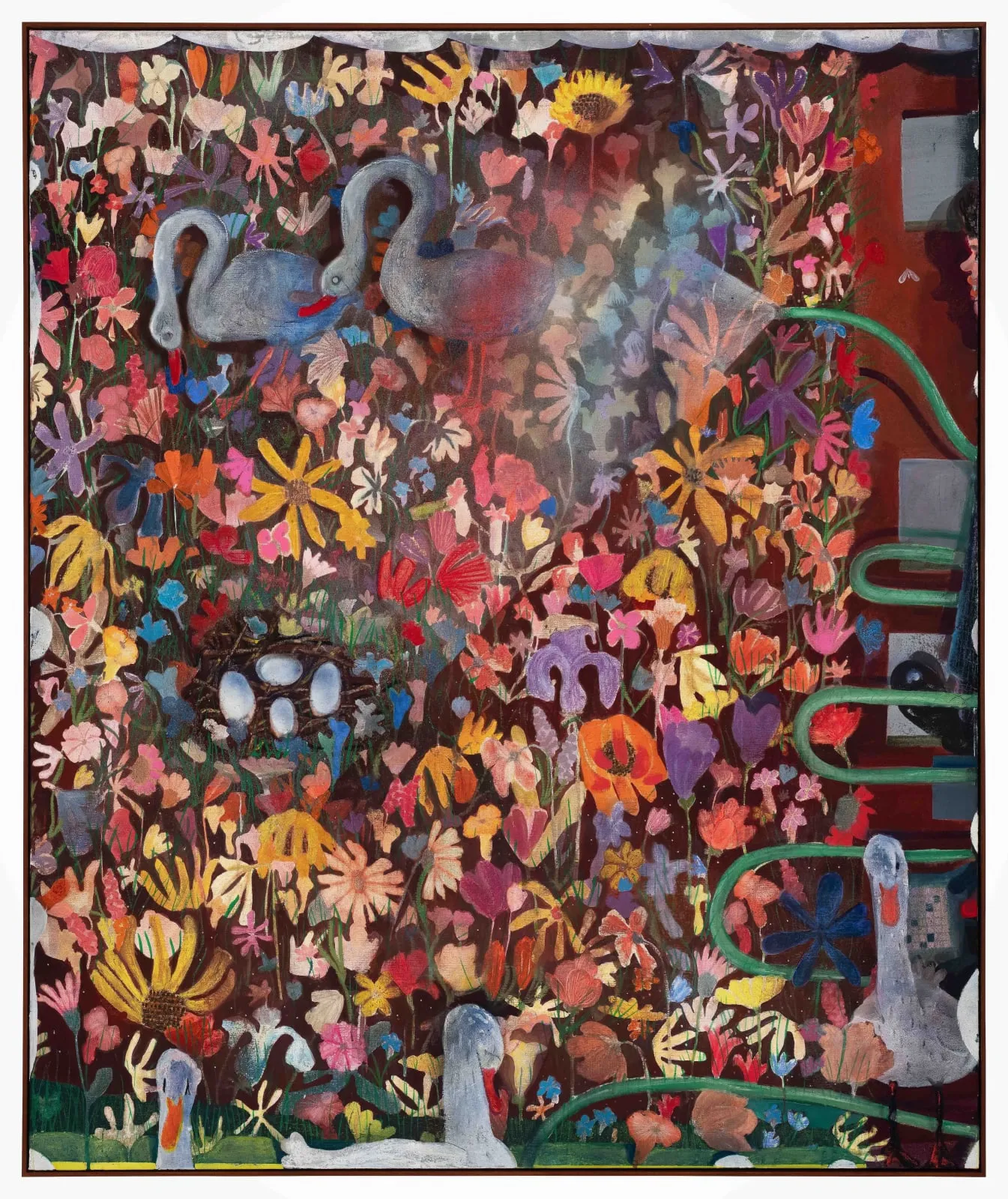
Pieter Jennes belongs to a younger generation of Belgian artists. Tracing his influences across timespans, styles, and individuals offers a broad overview of the artist's aesthetic inclinations, although his language remains personal. Medieval illustrated manuscripts, avant-garde experimentation with materials, children's books, as well as art historical giants such as Klimt and Grosz, can be found among his caricatural depictions of humans, the flatness of the space they inhabit, and its theatricality.
Metal staples that attach cut-outs of bugs and plants to the canvas remain visible, expanding the notion of collage, while his combination of painterly techniques—from thick to sheer layers of oil to pastels—advances a playful approach to technique.
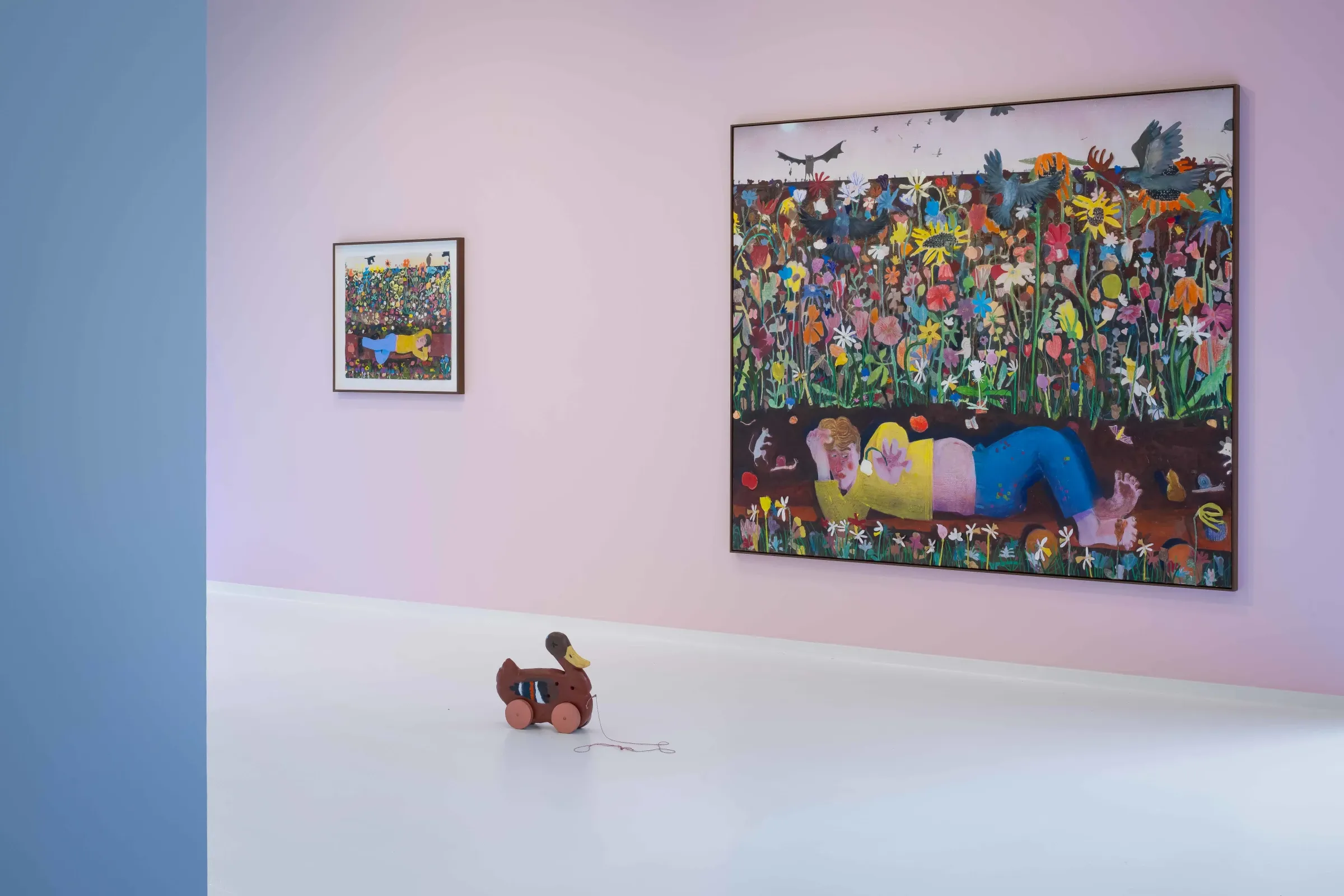
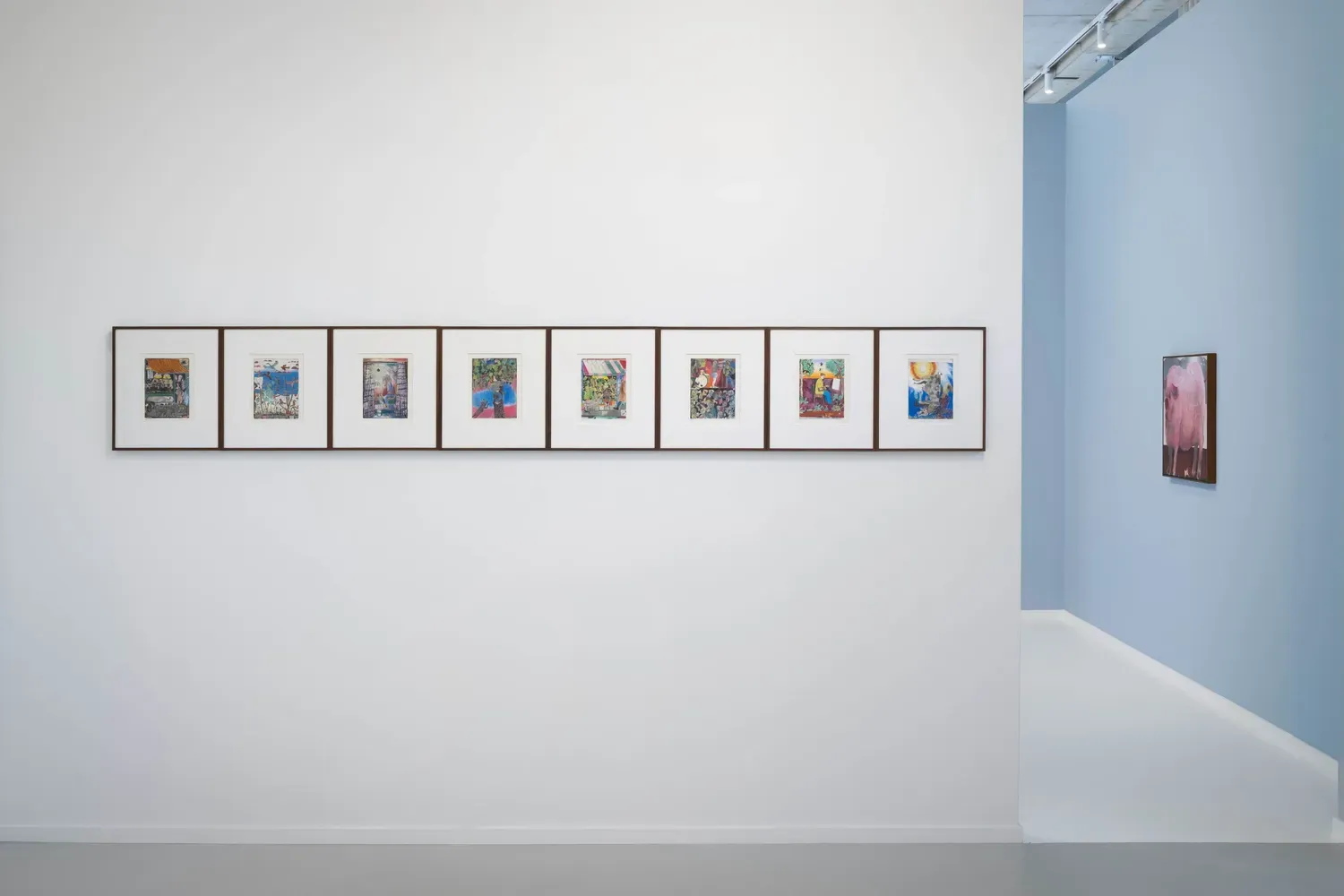
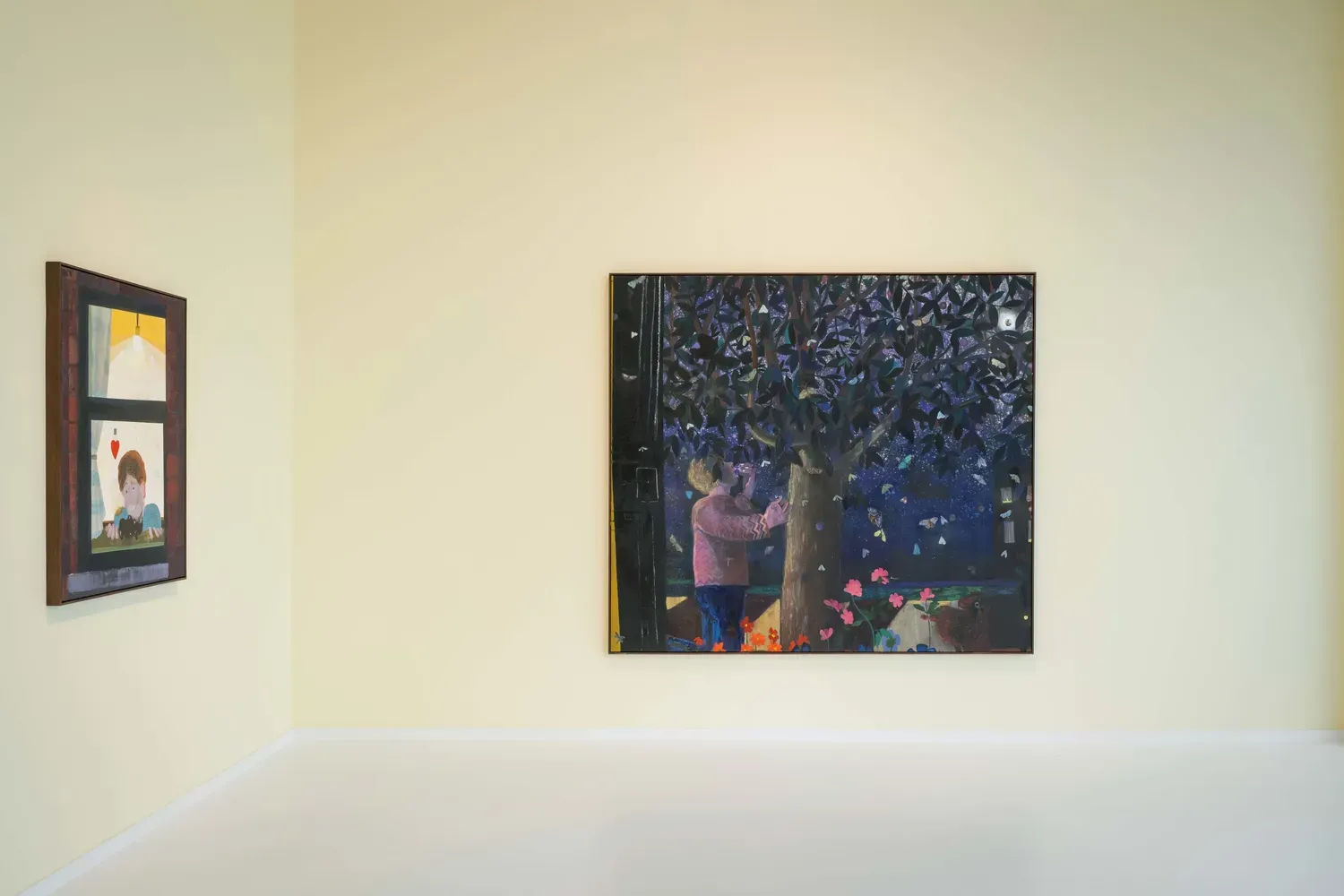
A pull-along toy duck on wheels left on the gallery floor enhances this feeling of playfulness, while at the same time invoking loneliness, a sense of being left behind by a child who has grown up. It is precisely this sentiment, of change, transformation, and something unsettling lurking among the many colors of Jennes's art that keeps one returning to these works. The overwhelming feeling of something unfinished that each of us still needs to reckon with.
The exhibition Huisje, tuintje,… will be on view at Gallery Sofie Van de Velde in Antwerp until November 16th, 2025.